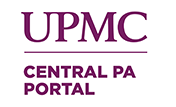If you have scoliosis — a curvature of the spine — the Schroth method of physical therapy (PT) may be for you.
The purpose of this specific type of PT is to reduce pain and help improve mobility.
This non-invasive treatment consists of exercises that help strengthen and improve muscle imbalances due to scoliosis.
At the UPMC Rehabilitation Institute, we have physical therapists trained in the Schroth method.
Find a clinic that offers Schroth therapy for scoliosis near you.
What Is Scoliosis?
Scoliosis is a condition where the spine takes on a 3D curve shaped as an "S" or "C."
Though the cause of scoliosis is unknown, it often starts in adolescence. But it can also occur later as a degenerative form in adults.
How Do You Treat Scoliosis at UPMC?
Scoliosis treatments vary based on each person's curve.
Younger people who are still growing may only need follow-up visits with their doctor, who will monitor the curve progression.
For those with a milder form of scoliosis, doctors often suggest PT.
Braces can also help treat scoliosis and often depends on the degree of the curvature.
More severe forms of scoliosis may need surgery.
What Is the Schroth Method of Physical Therapy?
Katharina Schroth developed this non-surgical scoliosis treatment in Germany in the 1930s. It's a form of PT for both children and adults diagnosed with scoliosis.
It consists of specific exercises that help stretch and strengthen the musculature along the spine.
A physical therapist tailors treatment based on:
- Your unique side-to-side curve.
- The rotating component of the vertebrae that occurs with scoliosis.
The exercises in the Schroth method focus on three key elements.
They are:
- Muscular symmetry. When you have scoliosis, the curve in the spine affects your back muscles. On one side, the muscles get weak, and on the other side, they work too hard, causing a painful imbalance. The Schroth method helps balance both sides to help better support the spine.
- Rotational angular breathing. These special breathing techniques help improve lung function, rib movement, and flexibility.
- Awareness of posture. Schroth therapists will teach you certain postural techniques based on your curve. You can use these techniques during daily activities to help lessen the stress placed on the spine.
What are some Schroth exercises?
The specific movements vary from person to person based on each curve.
You'll perform these exercises while in certain positions. Bean bags help place the spine in a better position while you complete strengthening exercises.
Other equipment you may use during Schroth PT to help strengthen weakened muscles include:
- Stability balls.
- Stall bars.
- Exercise bands.
How often should you do Schroth exercises?
It depends on how severe your scoliosis is.
The Schroth method is a long-term commitment. For the best results, you should implement these techniques into your daily routine.
Most people come to our clinic a few times a week based on their limitations. Once you finish the in-person program, your therapist will give you exercises you can do on your own.
How successful is the Schroth method for scoliosis?
The Schroth method has helped people with scoliosis for nearly 100 years.
It's shown to help lessen pain and improve strength and mobility.
You may also notice:
- Improved posture.
- Increased core strength.
- Better lung function.
Can Schroth or other forms of exercise reverse or cure scoliosis?
No. Although Schroth or other exercises can't cure scoliosis, they can help:
- Strengthen and stabilize the spine, which may ease scoliosis pain.
- Slow the progression of the curve as you age.
- Counteract the pull of gravity on the spine.
The goals of Schroth exercises for scoliosis are to:
- Decrease pain.
- Improve breathing.
- Improve gait and balance.
- Improve postural awareness.
- Help improve the ability to perform everyday activities.
Where Can I Find a UPMC Schroth Physical Therapist Near Me?
Many of our 60+ outpatient rehab locations have certified Schroth therapists.
Currently, we offer this scoliosis treatment at the following locations:




















